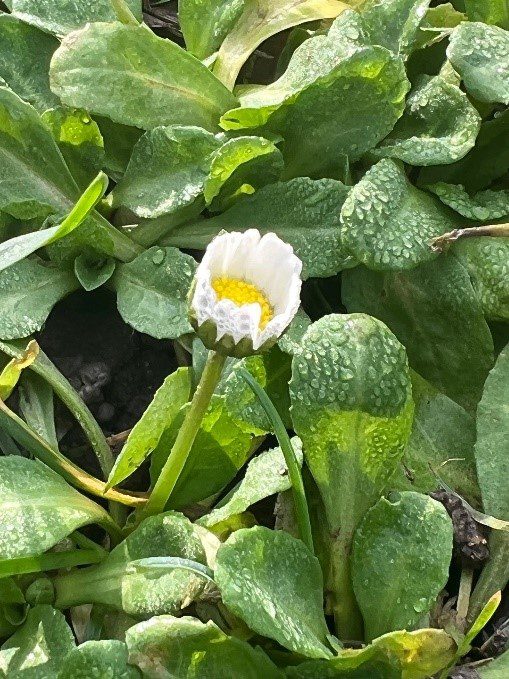For the last twelve years the Botanical Society of Britain & Ireland have been running a New Year’s Plant Hunt. The data is being used to see how wildflowers are responding to a changing climate – that’s the serious side. It’s also a lovely way to spend a cold January morning with other like-minded people.

So ten hardy folk from Alton Climate Action Network’s nature group AVLAN, with members of Alton Natural History Society providing much-needed expertise in plant identification, decided to give this a go! They gathered in Alton town centre and proceeded to wend their way around the streets and alleyways, popping into churchyards and investigating parks, including Flood Meadow.
There are rules to this walk. It has to be three hours or less and only native or established plants with flowers are recorded (so no looking in gardens).
Isobel Girvan from Alton Natural History Society said, “Our first plant in flower was Groundsel, and this was seen the most throughout the walk. Next was Winter Heliotrope, the scientific name being Petasites fragrans, referring to the sweet smell of the flowers. This was quickly followed by Shepherd’s Purse, Trailing Bellflower (originally a garden escape) and Daisy, the latter being recorded in the grassland around a church. Given that the sun was hardly out the Daisy flowers (from the old English meaning “day’s eye”) were still mostly closed.

Isobel Girvan from Alton Natural History Society said, “Our first plant in flower was Groundsel, and this was seen the most throughout the walk. Next was Winter Heliotrope, the scientific name being Petasites fragrans, referring to the sweet smell of the flowers. This was quickly followed by Shepherd’s Purse, Trailing Bellflower (originally a garden escape) and Daisy, the latter being recorded in the grassland around a church. Given that the sun was hardly out the Daisy flowers (from the old English meaning “day’s eye”) were still mostly closed.
“Then we saw a ‘grotty little green job’ that was ably identified by naturalist June Chatfield as Annual Mercury. This is partial to urban living being found in disturbed ground and gardens. The last few plants in flower on our list were Snowdrops and Aconites in the public gardens and male Hazel flowers in the catkins along the River Wey in Flood Meadows.”
All in all, the group found 22 flowering plants – we found 14 of the top 20 flowering plants in the New Year Plant Hunt nationally.
Jenny Griffiths from ACAN said, “I was amazed to find so many plants in flower in the depths of winter. It does show the impact of our warming climate on wildflowers. But it was also a joy to see them.”
 Alton Climate Action Network
Alton Climate Action Network